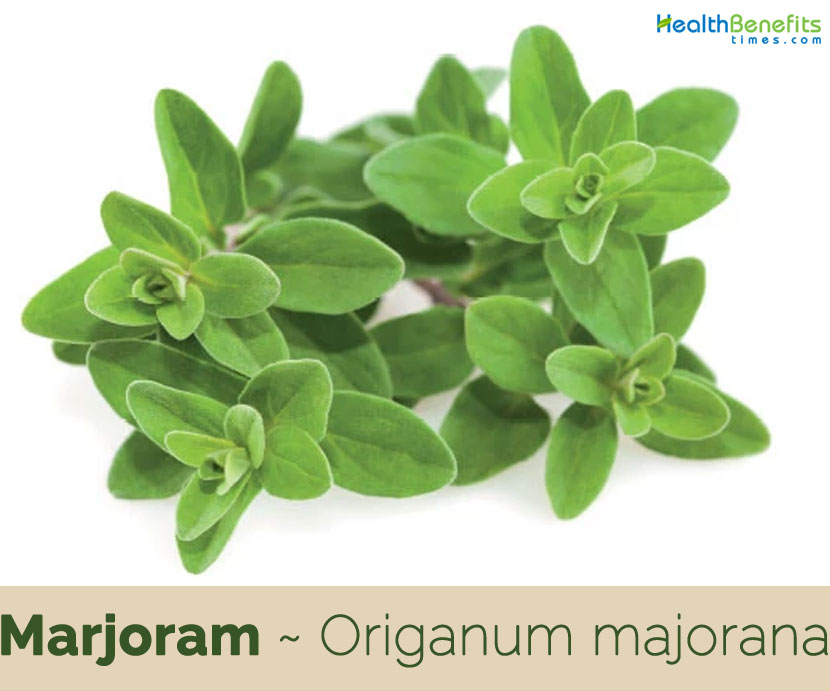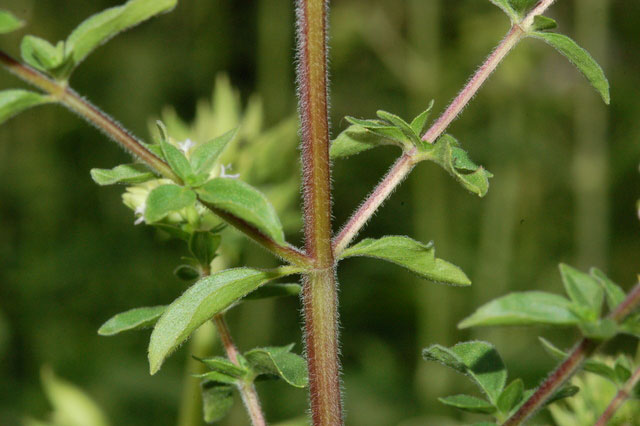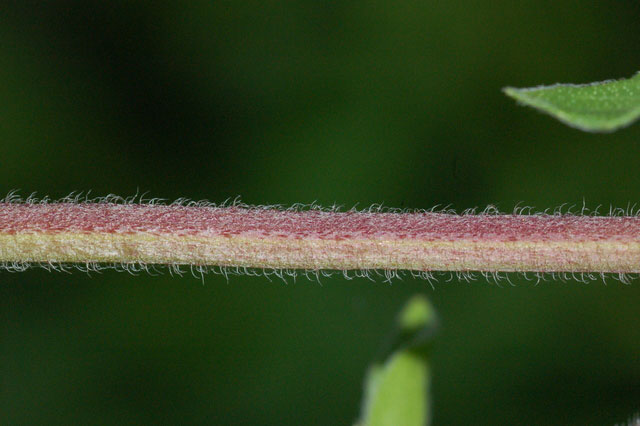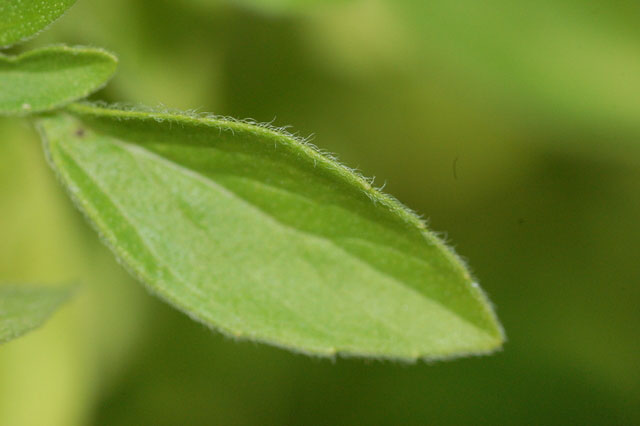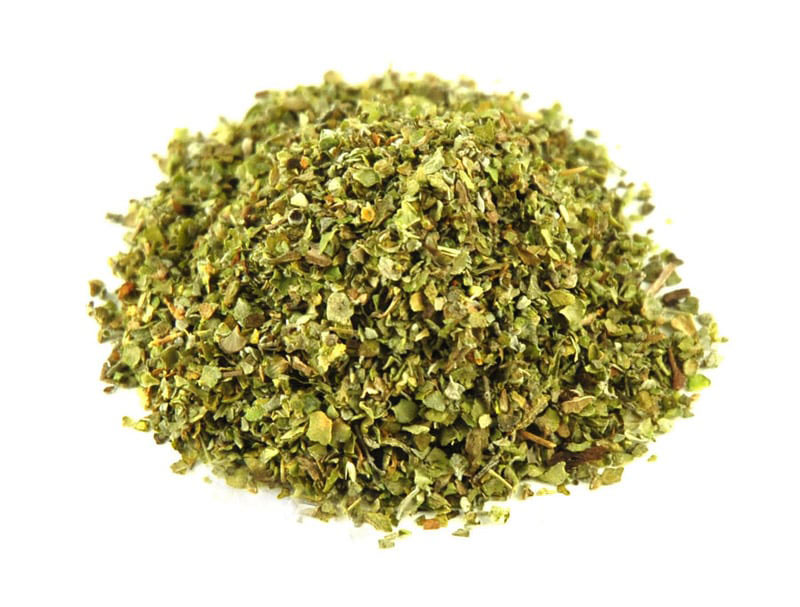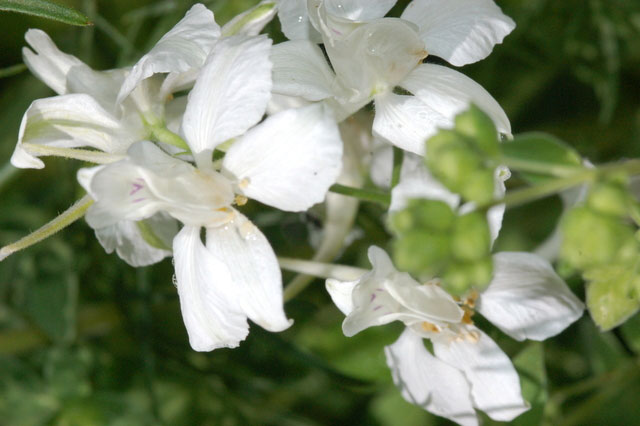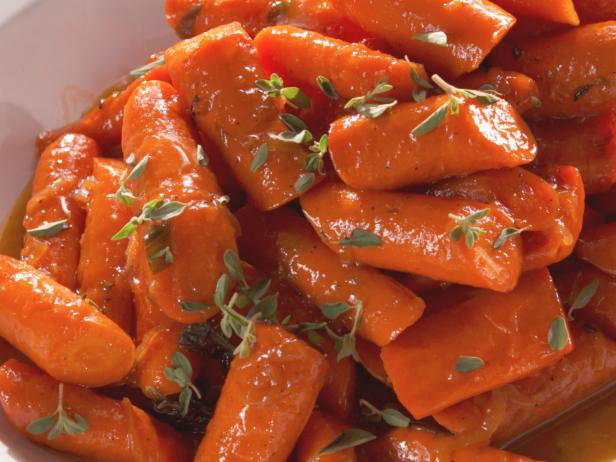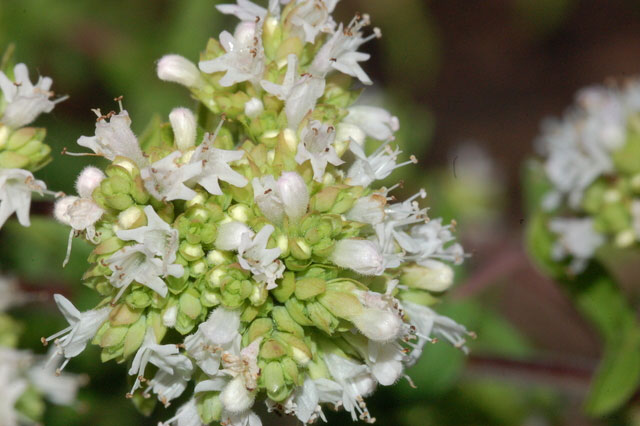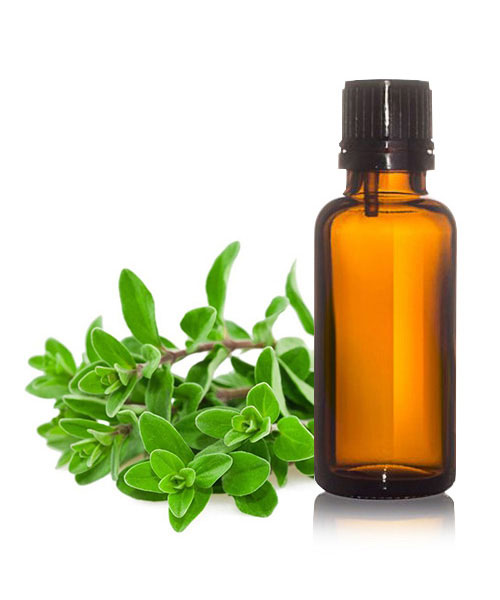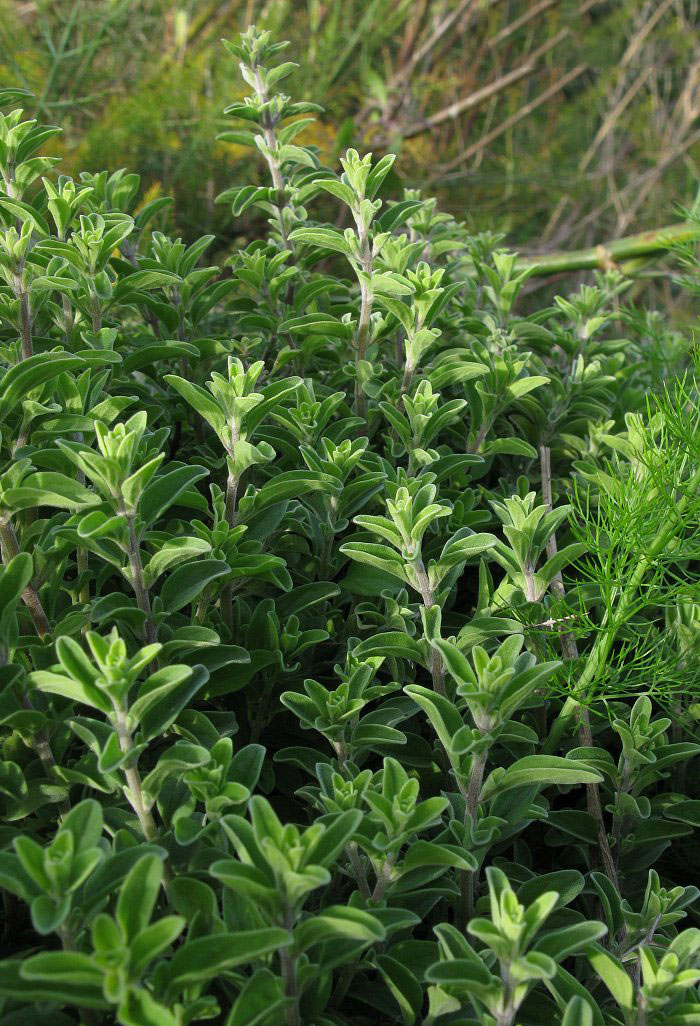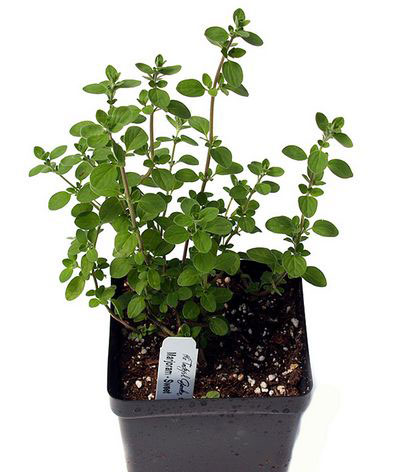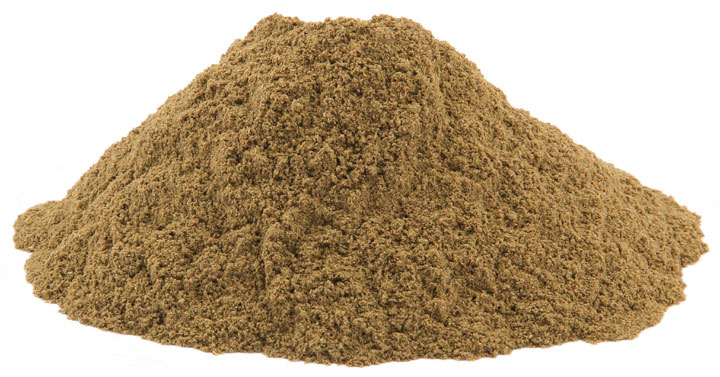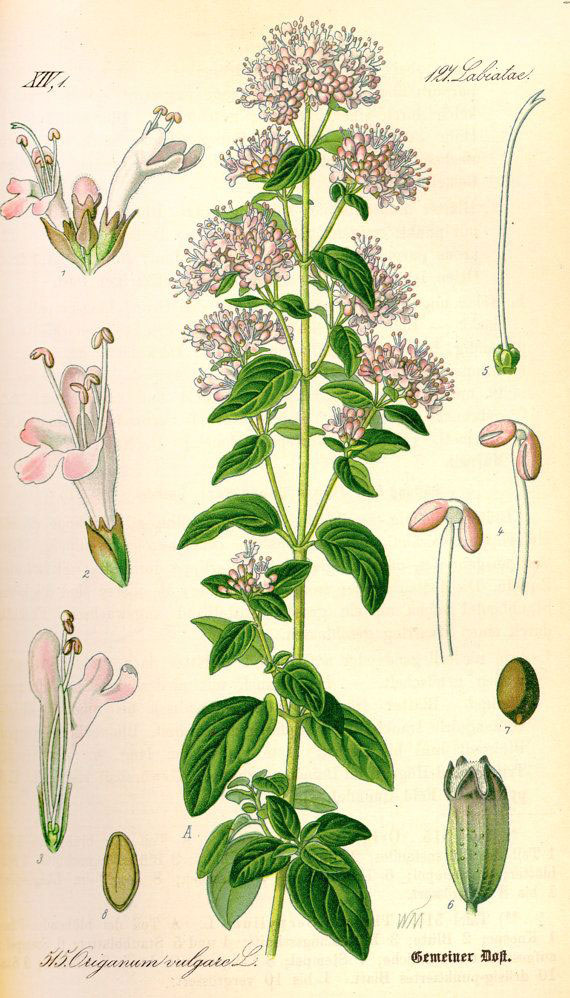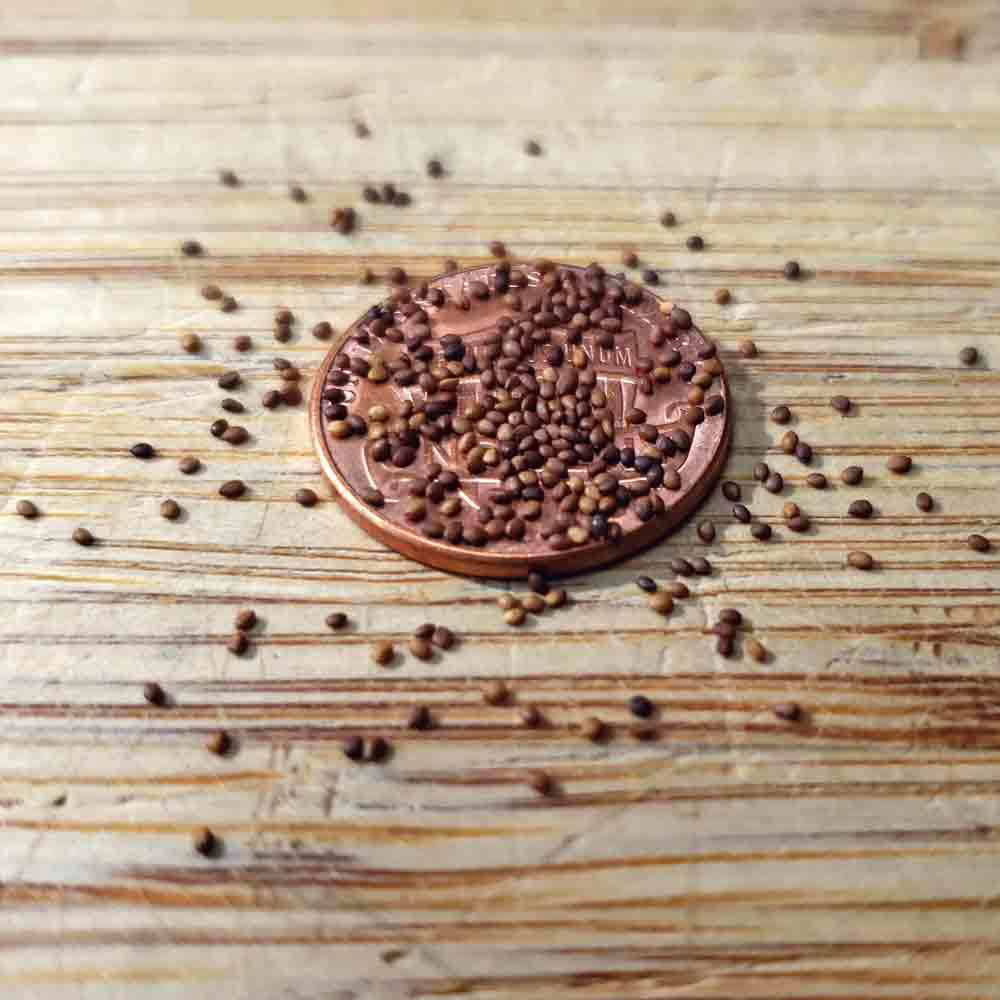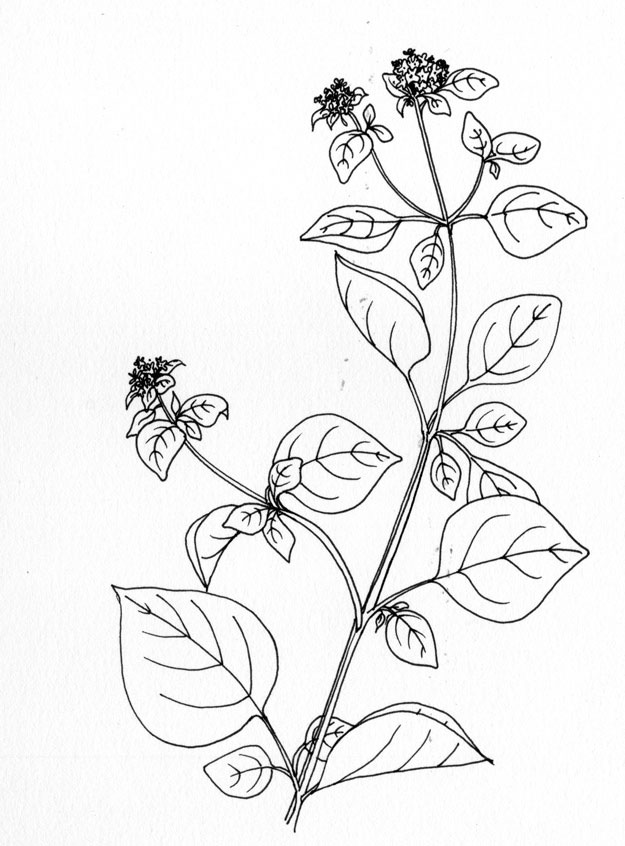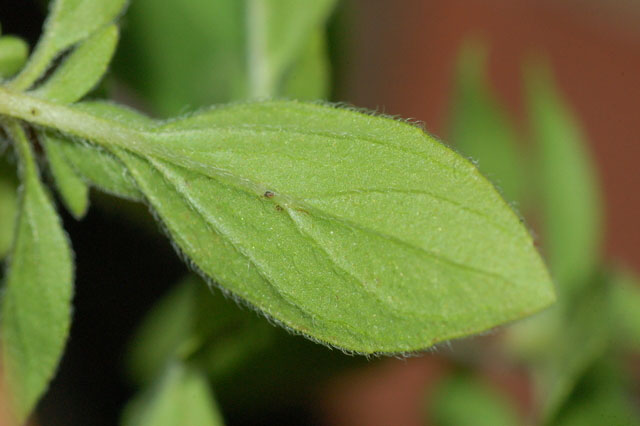Genus name probably comes from the Greek words oros meaning mountain and gamos meaning beauty in reference to the physical appearance of this plant which is sometimes native of mountain areas where it is appropriately referred to as “beauty of the mountain”. Marjoram is a popular herb (fresh or dried) for seasoning soups, sauces, salads, stuffing, stews, roasts, vegetables and meats. Fresh leaves do not freeze as well as oregano leaves. It’s particularly powerful when dried but can also be used fresh. Dried leaves are sometimes added to potpourris. The herb has been used in the traditional Austrian medicine for treatment of disorders of the gastrointestinal tract and infections.
Plant Description
Marjoram is a somewhat cold-sensitive bushy, perennial herb or undershrub that grows as annual. It is cold sensitive, frost tender aromatic herb that grows up-to 60-75 cm tall. The plant is found growing in field margins, footpaths, rubble walls near fields, farm houses, dry slopes and rocky places, occasionally in partial shade. The plant generally requires dry, warm, well-drained fertile garden loamy soil. Sometimes it can even thrive on chalk. It grows well under wide pH ranges from acidic, neutral to basic soils. The herb has sub–cylindrical, longitudinally wrinkled tap roots with transverse fissures; 0.2-0.6 mm in diameter. The outer surface of root is dark brown while light brown internally with several long rootlets and root scars are also present. It has descending multi-branched reddish square stems that spill over to create a mound. The stems are straight having weak, hairy, round and green with red speckles.
Leaves
Leaves are smooth, simple, petiolate and ovate to oblong-ovate, grey green in color arranged opposite to each other on a square stem. The texture is extremely smooth due to presence of numerous hairs. They are 0.5-1.5 cm long and 0.2-0.8 cm wide, with obtuse apex, entire margin, symmetrical but tapering base and reticulate venation.
Flower
Marjoram have tiny, two lipped, tubular, white or pale pink flowers with grey green bracts that bloom in spike like clusters from mid to late summers (June to September). They are less than 0.3 cm long and arranged in burr-like, 1.3 cm long heads. Flowers are hermaphrodite in nature. Seeds are minute, oval, dark and brown in color that ripens from August to September.
Health benefits of Marjoram
Apart from being a tasty culinary herb, marjoram both in its food and oil form has a number of excellent benefits for your health. It consists of numerous healthy minerals and vitamins and has a number of excellent medicinal properties. Among its many uses, marjoram can protect the heart, protect against diabetes and improve digestive health. Here are some of the most amazing health benefits of this herb:
1. Heart Health
Marjoram may be extremely beneficial for your cardiovascular health. It is a rich source of antioxidants that can help protect the heart as well as other major organs from disease. It is also able to relax and widen the blood vessels which helps reduce high blood pressure levels naturally.
Inhaling the essential oil either directly or from a diffuser can help calm down the body’s nervous system which helps dilate the blood vessels. This has a positive effect on the heart by lowering blood pressure and reducing strain on the heart.
2. Lowers high blood pressure
Studies have found that marjoram is effective in lowering blood pressure without affecting the heart rate. One way it does this is by relaxing the blood vessels so that blood flows through them easily. Marjoram also has diuretic properties, which increases the production of urine as well as the frequency of urination. As a result, excess water, salts and toxins are flushed out of the system. This also helps in lowering blood pressure.
3. Bone health
Regular intake of marjoram is a great way to boost the strength and health of your bones. This amazing herb provides about 520% of the recommended daily intake of vitamin K, a nutrient that contributes to the development of healthy bones. Vitamin-K also plays a key role in building bone mass by promoting osteotrophic activity in the bones. By helping to build strong bones, this vitamin helps prevent the onset of bone disorders like osteoporosis.
4. Diabetes
Nearly 10% of the population of the United States has diabetes and there are no signs that the figure is slowing down. Fortunately, type 2 diabetes can be managed with good lifestyle choices and diet. Studies show that marjoram is an excellent choice for people trying to manage their diabetes. Marjoram along with other herbs like rosemary and oregano effectively prevent certain enzymes which improve insulin tolerance. Whether you eat the herb fresh or dried, it can be a great help to a diabetic patient’s ability to manage their blood sugar levels.
5. Helps with blood clotting and prevents anemia
Marjoram is an excellent source of vitamin K, which is essential for normal blood clotting to take place. Excessive loss of blood is one of the factors leading to anemia and clotting helps prevent heavy bleeding. Marjoram is also high in iron content, another nutrient needed for the production of hemoglobin. The consumption of marjoram ensures that your daily requirements of iron are met, which improves blood circulation and the transport of oxygen to all parts of the body. This helps in improving your energy levels and also in optimizing the functioning of various organs in the body.
6. Pain Relief
Marjoram essential oil is an excellent remedy for muscle pain, spasms and tension headaches. Combine a few drops with carrier oil and massage it into the affected parts of your body for instantaneous relief.
7. Digestive Health
Leaves of marjoram act as a soothing tonic that helps improve the performance of the digestive system. It can boost your appetite and promote digestion by stimulating the production of saliva and digestive enzymes. Marjoram also helps prevent the various digestive problems including flatulence, colic, constipation, indigestion and stomach infections. The regular intake of marjoram tea has been found to help people cope with eating disorders.
8. Boost immunity
Marjoram is an immunity booster because of the presence of nutrients like vitamin A and vitamin C, both of which also acts as strong antioxidants. Vitamin C strengthens the immune system by increasing the number of white blood cells, which protects the body against the attack of foreign invaders like bacteria and virus. Vitamin A also plays an important role in supporting the healthy functioning of the immune system.
9. Healthy nervous system
Marjoram is one of the few herbs that support the effective functioning of the nervous system. Nutrients in the herb enhance brain activity and helps prevent damage to the nerve cells. Marjoram essential oil is known to soothe and calm the mind and alleviate disorders like anxiety, stress and depression. It is also used in the treatment of dementia and Alzheimer’s disease.
10. Respiratory Problems
Marjoram essential oil can also be used to treat respiratory issues and the symptoms of bronchitis, colds and flu. It has expectorant properties that can help loosen mucus and phlegm in the respiratory tract. Try inhaling the oil directly from the bottle or applying a few drops to the cheeks and under your nostrils.
11. Stress and Anxiety
Marjoram especially its essential oil is an excellent remedy for relieving feelings of stress and anxiety. Many essential oils have a similar impact and signify a great natural alternative to the many popular prescription medications.
You can either diffuse it around the home and inhale its vapors or dilute it with a carrier oil to make a stress relieving massage. By helping relieve your tensions and anxieties, marjoram essential oil can also help improve your quality of sleep and ensure you have a more restful night.
12. Treats cold and cough
Marjoram is an age old remedy for treating the common cold, flu and coughs. It functions as an expectorant and helps to loosen phlegm and mucus, aiding in its expulsion. Saponin found in this herb has decongestant properties and helps in relieving congestion in the sinuses and chest, providing immense relief. As a result, marjoram is often used in the treatment of respiratory problems like asthma, sinusitis, bronchitis and coughs.
13. Women’s Health
Marjoram has long been valued in women’s health. It can help to restore the balance of female hormones and to regulate menstruation. Not only does it help regulate the cycle but it also helps to relieve many of the familiar symptoms that women get during their monthly period and can also help treat the symptoms associated with menopause.
Because of its natural emmenogogue properties, it can encourage menstruation and has even been used to help nursing mothers produce more milk.
14. Skin Health
Leaves of marjoram as well as the essential oils obtained from it are often used in many skin products such as lotions, creams and soaps. This herb is packed with antioxidants, which can help prevent free radical damage. The application of a mixture of marjoram essential oil and olive or coconut oil is a great way to prevent the occurrence of premature signs of aging such as wrinkles, dark spots and fine lines. Marjoram is a natural antiseptic and is hence used as a remedy for various skin conditions such as acne, pimples, rashes, psoriasis and eczema. The antiseptic properties of this herb also make it effective in treating wounds and in preventing infection. Marjoram also exhibits anti-fungal properties, which helps in preventing fungal infections such as athlete’s foot.
15. Against snoring
The marjoram by-product, like its oil, helps eliminate snoring, as it promotes the respiratory system and calms the larynx. The aroma penetrates the body and tones the airways.
16. Hair Health
You can also add a few drops of marjoram essential oil to your regular conditioners or shampoo to help strengthen your hair and enhance its appearance. Marjoram essential oil can strengthen the follicles meaning your hair should grow back stronger and healthier.
The oil also contains anti-fungal properties which makes it a good natural option to treat common scalp issues like dandruff. It also smells great so give it a try.
17. Helps you stay young
Marjoram is a rich source of various nutrients that displays powerful antioxidant effects. One of the main factors that cause early aging is the oxidation of cells brought about by free radicals in the body. Antioxidants help in protecting your cells and DNA from the damage caused by these free radicals. The intake of foods rich in antioxidants such as marjoram is thus helpful in maintaining good health and youth.
18. Promotes better sleep
Majority of people around the world suffer from insomnia, the inability to fall asleep or stay asleep. Good quality sleep is absolutely critical for maintaining a healthy body and mind. Marjoram essential oil is a wonderful remedy for people with insomnia, as it has the ability to soothe and calm the mind. It can release your mind off of stress and tension and provide a sedative effect. Few drops of marjoram essential oil on the pillow are all you need to drift off into a good night’s sleep.
Traditional uses and benefits of Marjoram
- Marjoram is mainly used as a culinary herb, but is also medicinally valuable due to its stimulant and antispasmodic properties.
- It has a stronger effect on the nervous system than the related oregano and is also thought to lower the sex drive.
- The herb is antiseptic, antispasmodic, carminative, cholagogue, diaphoretic, diuretic, emmenagogue, expectorant, stimulant, stomachic and mildly tonic.
- It is taken internally in the treatment of bronchial complaints, tension headaches, insomnia, anxiety, minor digestive upsets and painful menstruation.
- Externally, it is used to treat muscular pain, bronchial complaints, arthritis, sprains and stiff joints.
- The oil is used as an external application for sprains, bruises etc.
- Essential oil is used in aromatherapy. Its keyword is ‘Muscle relaxant’.
- Tea made from the leaves or flowers is used for runny nose and colds in infants and toddlers, dry and irritating coughs, swollen nose and throat, and ear pain.
- Marjoram tea is also used for various digestion problems including poor appetite, liver disease, gallstones, intestinal gas, and stomach cramps.
- Some women use marjoram tea for relieving symptoms of menopause, treating mood swings related to menstrual periods, starting menstruation, and promoting the flow of breast milk.
- Marjoram oil is used for coughs, gall bladder complaints, stomach cramps and digestive disorders, depression, dizziness, migraines, nervous headaches, nerve pain, paralysis, coughs, runny nose; and as a “water pill.”
- In the old Egypt, marjoram was used to disinfect and preserve food and its oil was massaged on the forehead and in the
- Traditionally, the leaves of marjoram are used to cure diabetes, insomnia, catarrh, asthma and
- Marjoram has been traditionally used for the treatment of gastrointestinal disturbances, cough and bronchial diseases.
- It is used in mouthwashes for oral hygiene and also applied topically to relieve symptoms of common cold, such as nasal congestion.
- An infusion made from the fresh plant was used to relieve nervous headaches by virtue of camphouraceous constituent present in the oil and externally applied in bags as a hot fomentation to painful swellings and rheumatism, as likewise for
- Marjoram has also been successfully used externally for healing scirrhous carcinoma of the
- It is a home remedy for chest infection, cough, sore throat, rheumatic pain, nervous disorders, cardiovascular diseases, epilepsy, insomnia, skin care, flatulence and stomach
- The oil of marjoram has been used since ages in external application for sprains, bruises, stiff and paralytic limbs and toothache and as hot fomentation in acute diarrhea.
- It is used for easing sore muscles and swollen joints while stimulating peristaltic movement of the digestive system for bad appetite as well for menstrual cramps
Ayurvedic Health benefits of Marjoram
- Skin Disorder: Use Marjoram oil topically over the affected area twice a day.
- Cough: Boil 2 tablespoons of dried Marjoram in 2 cups of water. Inhale the steam.
- Sinusitis: Steep One tablespoon of dried Marjoram leaves in One cup of water for 10 minutes. Drink twice daily.
- Libido: Take half cup of decoction of Marjoram flowers and leaves or half teaspoon powder with milk.
- Hematoma: Make an infusion of Marjoram flowers. Wet the affected area with this infusion.
- Immunity Booster: Prepare a tea of Marjoram leaves. Have a cup once a day.
- Cold: Add 3 to 4 crushed Marjoram leaves in a cup of water. Boil for 10 to 12 minutes. Strain well and drink the tea. Have it twice a day for a week.
- Menstrual Disorders: Make a decoction of Marjoram leaves. Consume it two times a day.
Culinary Uses
- Leaves can be consumed raw or cooked.
- Marjoram is widely used as a flavoring for salad dressings, vegetables, legumes and oils.
- It has a more delicate flavor than the closely related oregano, and is best when used fresh and only added towards the end of cooking.
- Aromatic seeds are used as a flavoring in sweets, drinks etc.
- Herbal tea is made from the fresh or dried leaves.
- Flavor resembles a blend of thyme, rosemary and sage.
- Marjoram is used for seasoning soups, stews, dressings, and sauces.
- Leaves and flowers are popular in meat dishes, soups, sauces, pasta and for flavoring oils and vinegar, in Greek and Italian cuisine.
- For its aroma similar to that of thyme, it can be rubbed in meat chops before roasting them to perfume them.
- It is an excellent herb to prepare pickles.
- Fresh or dried, it is an excellent ingredient for pizza and pasta.
- Fresh marjoram with basil is excellent for preparing the tomato salad.
- Fresh and cut leaves, added to garnishes and sausages, or dried, added to dumplings served with lamb.
- Butter with marjoram for chicken sandwiches, or with roasted potatoes.
- Dried marjoram, its volatile oil and the extracts have been applied in the flavoring of various foods, particularly soups, sauces, meat, fish, canned foods, liqueurs and vermouths.
- Dried flowering tops are used for sachets and potpourris.
- Aromatic seeds were used in confectionery and French confitures.
Recipes
Baked eggplant
Ingredients
- 4 eggplants (aubergines)
- 10 oz. (285 g) of Mozzarella, thinly sliced
- 10 fl oz. (300 ml) of bechamel sauce
- 4 slices of chopped Parma ham
- 1 oz. (30 g) of grated Parmesan
- 3 tbsp. of olive oil
- 1 tbsp. of freshly chopped marjoram
- 1 tbsp. of freshly torn basil
- salt and pepper
- For the tomato sauce
- 1 lb. (455 g) of fresh tomatoes, peeled and chopped
- 14 oz. (400 g) tin of chopped tomatoes
- 20 fl oz. (600 ml) of vegetable stock
- 5 fl oz. (150 ml) of dry white wine
- 1 sliced onion
- 4 crushed cloves of garlic
- 4 tbsp. of olive oil
- 4 tbsp. of freshly chopped parsley
- 2 tbsp. of lemon juice
- 1 tbsp. of sugar
Instructions
- First of all, prepare the tomato sauce. Heat the olive oil over a medium heat in a large saucepan.
- Add the chopped onion and garlic and fry for 4 – 5 minutes, stirring frequently.
- Add the fresh and tinned tomatoes, vegetable stock, parsley, lemon juice and sugar and stir all of the ingredients together.
- Cover the pan with the lid and cook on a gentle simmer for 15 minutes, stirring occasionally.
- Pour in the wine, taste and season with salt and pepper.
- Preheat the oven to 375°F (190°C).
- Cut the eggplant into fairly thin slices length-ways.
- Bring a large saucepan of water to the boil and add the eggplant slices. Boil for 5 minutes.
- Drain the eggplant and dry with kitchen paper.
- Pour some of the tomato sauce into the bottom of a large ovenproof dish.
- Add slices of eggplant on top and drizzle with a little olive oil.
- Cover the eggplant with some Mozzarella and Parma ham and sprinkle with a little of the chopped marjoram and basil.
- Season with salt and pepper.
- Repeat the layers as above until all the ingredients have been used.
- Pour over the béchamel sauce and top with the Parmesan cheese.
- Place into the oven and bake for 35 – 40 minutes or until the top is golden brown.
- Remove from the oven and serve hot.
Slow-cooked pork in milk
Ingredients
- 1 lb. 12 oz. (800 g) of boned leg of pork
- 2 pints (1.1 l) of milk
- 2¾ oz. (80 g) of diced pancetta
- 1 oz. (30 g) of butter
- 1 chopped onion
- 2 finely chopped cloves of garlic
- 2 fresh bay leaves
- 2 tbsp. of freshly chopped marjoram
- 2 tbsp. of chopped thyme (remove leaves from stem)
- 1 tbsp. of crushed green peppercorns
- 1 tbsp. of olive oil
Instructions
- Remove any excess fat from the boned pork with a sharp knife. Shape the meat into a neat form or roll and secure with a piece of string.
- Melt the butter and heat with the olive oil in a large saucepan. Add the chopped onion, garlic and pancetta and fry over a moderate heat for 3 minutes.
- Add the pork meat to the pan and cook until browned all over.
- Pour the milk into the pan and reduce the heat.
- Add the bay leaves, marjoram, thyme and crushed peppercorns and cook for 1 – 1½ hours or until the meat is soft. Towards the end of the cooking time, you will need to keep an eye on the liquid, as it may reduce too quickly and burn. If necessary add more milk and continue to cook for longer.
- Once the meat is done, remove from the pan and transfer to a carving dish. Keep the cooking liquid.
- Cut the pork into slices and serve onto warmed plates.
- Pour the reserved milk liquid over the meat as a sauce and serve with vegetables and potatoes.
Other Facts
- Leaves and flowers yield 0.3 – 0.4% essential oil by steam distillation.
- Called ‘Oil of Sweet Marjoram’, it is used as a food flavoring and in perfumery, soaps, hair products etc.
- The plant is often used to disinfect bee hives.
- In manufacturing, the oil is used as a fragrance in soaps and cosmetics.
- Marjoram was used during ancient times in the rituals of love.
- They are attributed protective properties against evil. In love, she increases feelings and attraction towards this person.
- She gives protection to the house, hanging a few branches in the door of the house.
- It is used to treat depressions.
- The people of Europe used to rub the leaves of the herb on oak pieces of furniture and floors to get fragrant glow over
- In aromatherapy, essential oil made from marjoram bolsters the mind and spirit and relieves the feeling of grief and loneliness.
- Marjoram is often used medicinally in the form of the essential oil, about 400 grams being obtained from 70 kilos of the fresh herb.
Special Precautions & Warnings
Pregnancy and breast-feeding: It is possibly unsafe to use marjoram in medicinal amounts if you are pregnant. It might start your period, and that could threaten the pregnancy.
Not enough is known about the safety of using marjoram in medicinal amounts if you are breast-feeding. Stay on the safe side and avoid use.
Children: Do not give marjoram to children in medicinal amounts. It is possibly unsafe for them.
Bleeding disorders: Taking medicinal amounts of marjoram might slow clotting and increase the chances of bruising and bleeding in people with bleeding disorders.
Slow heart rate (bradycardia): Using medicinal amounts of marjoram might slow down the heartbeat. This could be a problem in people who already have a slow heart rate.
Allergy to basil, hyssop, lavender, mint, oregano, and sage: Marjoram can cause allergic reactions in people allergic to these plants and other members of the Lamiaceae family of plants.
Diabetes: Marjoram might affect blood sugar levels in people with diabetes when used in medicinal amounts. Watch for signs of low blood sugar (hypoglycemia) and monitor your blood sugar carefully if you have diabetes and use marjoram medicinally.
Gastrointestinal tract blockage: Marjoram might cause congestion in the intestines when used in medicinal amounts. This might cause problems in people who have a blockage in their intestines.
Ulcers: Marjoram might increase secretions in the stomach and intestines when used in medicinal amounts. There is concern that this could worsen ulcers.
Lung conditions: Marjoram might increase fluid secretions in the lung when used in medicinal amounts. There is concern that this could worsen lung conditions such as asthma or emphysema.
Seizures: There is concern that using medicinal amounts of marjoram might increase the risk of seizures.
Surgery: Taking medicinal amounts of marjoram might increase the risk of bleeding during and after surgery. Stop using marjoram medicinally at least 2 weeks before a scheduled surgery.
Urinary tract obstruction: Marjoram might increase secretions in the urinary tract when used in medicinal amounts. There is concern that this could worsen urinary obstruction.
References:
https://www.itis.gov/servlet/SingleRpt/SingleRpt?search_topic=TSN&search_value=32631#null
http://www.hear.org/pier/species/origanum_majorana.htm
https://pfaf.org/user/Plant.aspx?LatinName=Origanum+majorana
http://www.missouribotanicalgarden.org/PlantFinder/PlantFinderDetails.aspx?kempercode=d828
http://www.floracatalana.net/origanum-majorana-l-
https://plants.usda.gov/core/profile?symbol=ORMA
https://npgsweb.ars-grin.gov/gringlobal/taxonomydetail.aspx?id=25912
https://bie.ala.org.au/species/NZOR-6-55022
https://www.cabi.org/isc/datasheet/32294
http://www.theplantlist.org/tpl/record/kew-143853
https://gd.eppo.int/taxon/MAJHO
https://botanical.com/botanical/mgmh/m/marjor19.html
https://en.wikipedia.org/wiki/Marjoram
https://www.flowersofindia.net/catalog/slides/Marjoram.html
Comments
| Marjoram Quick Facts | |
|---|---|
| Name: | Marjoram |
| Scientific Name: | Origanum majorana |
| Origin | Cyprus and the adjacent part of South Turkey |
| Colors | Light Brown |
| Shapes | Nut lets 0.75-1 mm long |
| Taste | Sweet, pungent |
| Major nutrients | Iron (1033.88%) Vitamin K (518.08%) Manganese (236.22%) Calcium (199.00%) Copper (125.89%) |
| Health benefits | Promotes better sleep, Helps you stay young, Hair Health, Against snoring, Skin Health, Women’s Health, Treats cold and cough, Stress and Anxiety, Respiratory Problems, Healthy nervous system, Boost immunity, Digestive Health, Pain Relief, Helps with blood clotting and prevents anemia, Diabetes, Bone health, Lowers high blood pressure, Heart Health |
| Name | Marjoram |
|---|---|
| Scientific Name | Origanum majorana |
| Native | Cyprus and the adjacent part of South Turkey. It is cultivated in several countries in Europe, Africa, America, and Asia |
| Common Names | Sweet marjoram, Pot marjoram, marjoram, knotted marjoram, Garden Marjoram, Gartenmajoran |
| Name in Other Languages | Afrikaans: Marjolein Albanian: Manxuranë, rigon Arabic: Marzanjush zaetar (زعتر), murdqush kabir (مردقوش كبير) Azerbaijani: Mərzə Basque: Mendaro (landarea) Belarusian: Mayaran (Маяран) Bosnian: Mažuran Bulgarian: mayorana (майорана) Burmese: Yon-BWE Catalan: Amàrac, Majorana, Marduix, Moraduix, moraduc Croatian: Mažuran, Majoran, vrtni mažuran Czech: Majorán záhradný, Majoránka zahradní Danish: Havemerian, Merian Dutch Marjolein, Echte marjolein English: Sweet marjoram, Pot marjoram, marjoram, knotted marjoram, Garden Marjoram, Gartenmajoran Esperanto: Majorano Estonian: Aedmajoraan Finnish: Maustemeirami, Meirami French: Marjolaine, Marjolaine cultivée, Origan des jardins, grand origan, marjolaine d’Orient, marjolaine des jardins, marjolaine vraie, marjolaine à coquille Galician: Maiorana German: Blattmajoran, French Majoran, Marjoram, Wurstkraut, Garten-Majoran, Majoran, echter Majoran Greek: Mantzourana (Μαντζουράνα), Matzourana (Ματζουράνα) Hebrew: אזוב תרבותי Hindu: Murwa (मरुआ), sathra Hungarian: Kerti majoránna, Majoránna Ido: Majorano Indonesian: Marjoram Irish: Oragán cumhra Italian: Maggiorana coltivato, Maggiorana, Origano maggiorana, persia Japanese: Maajoramu (マージョラム), Majoramu (マジョラム), mayonara (マヨナラ) Kannada: Maruga (ಮರುಗ) Korean: Majolam (마조람) Kazakh: Mayoran (Майоран) Kirghiz: Майоран Latin: Amaracum Latvian: Majorāns Limburgan: Majoraan Lithuanian: Kvapusis mairūnas Macadonian: Мајоран Malay: Marjoram Maltese: Merqtux, Riegnu Marathi: Marwa, mijirikamy Netherlands: Majoraan, marjolein Norwegian: Merian Occitan: Majorana, Manugueta, Menugueta, Origan Portuguese: Manjerona, Manjerona cultivadas Punjabi: Marū’ā (ਮਰੂਆ) Persian: مرزنجوش وحشی Polish: Lebiodka majeranek, Majeran ogrodowy, Majeranek Portuguese: Manjerona, manjerico Quechua: Mikhurana Romanian: Măghiran Russians: Maiorana sadovyi (Майоран садовый), Mayoran (Майоран) Sanskrit: Maruv (मरुव), Maruvium, ajanmasurabhi, marwa Serbian: Mažuran Slovak: Majorán záhradný Spanish: Mejorana, Mejorana cultivada, oregano europeo, mayorama, mejorana, mejram, Acapuas, Almaraco, Almoradux, Anaraco, Sampsuco, almoradijo, mejorana bastarda, mejorana dulce Swedish Mejram Tamil: Marikozhundhu, Chutanaccu, kuvalamayam Telegu: maruvamu (మరువము) Turkish: Alanya kekigi, Autism kekik, Mercanköşk Urdu: Marwa, marzanjosh Ukrainian: Mayoran (Майоран), mayoran sadovyy (майоран садовий) Walloon: Mariolinne Welsh: Penrhudd yr ardd |
| Plant Growth Habit | Somewhat cold-sensitive bushy, perennial herb or undershrub |
| Growing Climates | Cultivated in field margins, footpaths and rubble walls near fields, farm houses, dry slopes and rocky places, occasionally in partial shade |
| Soil | Generally requires dry, warm, well-drained fertile garden loamy soil. Sometimes it can even thrive on chalk. It grows well under wide pH ranges from acidic, neutral to basic soils |
| Plant Size | About 75 cm tall |
| Root | Sub–cylindrical, longitudinally wrinkled tap roots with transverse fissures; 0.2-0.6 mm in diameter. The outer surface of root is dark brown while light brown internally with several long rootlets and root scars are also present. Fractures being long, irregular and fibrous having aromatic odor and non-bitter |
| Stem | 20-60 cm, erect or ascending, glabrous to tomentose, not papillose |
| Leaf | Smooth, simple, petiolated, ovate to oblong-ovate, 0.5-1.5 cm (0.2-0.6 inches) long, 0.2-0.8 cm (0.1-0.3 inches) wide, with obtuse apex, entire margin, symmetrical but tapering base, and reticulate venation. The texture is extremely smooth due to the presence of numerous hairs |
| Flowering season | June to September |
| Flower | Tiny, two lipped, tubular, white or pale pink flowers with grey green bracts that bloom in spike like clusters |
| Fruit Shape & Size | Nut lets 0.75-1 mm, light brown |
| Fruit Color | Light Brown |
| Seed | Minute, oval, dark |
| Propagation | By Seed and rooting from the nodes |
| Taste | Sweet, pungent |
| Plant Parts Used | Dried flower, leaves |
| Season | August to September |
| Health Benefits |
|


